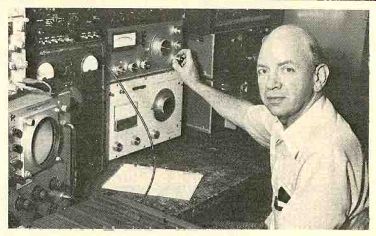
By Julian D. Hirsch
A GOOD WORD FOR BUREAUCRACY: A couple of years ago, the Federal Trade Commission ruling on advertised amplifier-power ratings elicited some rather strong reaction from high fidelity equipment manufacturers. The precipitating cause was the Commission's "preconditioning" requirement for published ratings: an amplifier had to be operated at one-third its rated power for one hour followed by five minutes at full power, both channels driven, before measurement of its power output and distortion could be made.
Although reasonable warning had been given to the industry by the FTC before the ruling was promulgated, this requirement managed to slip by the engineering departments of most manufacturers until it was too late to do anything about it. The difficulty was that amplifier output stages operating in class B or AB (such as are used in almost all high-fidelity amplifiers and receivers) have to dissipate the greatest amount of heat from their output transistors when operating at about 40 percent of maximum rated power. Many manufacturers therefore found themselves facing the problem that their amplifiers overheated or blew up when they were subjected to the FTC's "preconditioning," in spite of the fact that these same units had already proved to be reliable performers in home music systems.
Some relief was eventually afforded by a liberalized interpretation of the ruling, but many manufacturers found it necessary to redesign their products (or those scheduled for the next year's line) to include enhanced cooling systems and, in a few cases, to derate their power output slightly to comply with the specifics of the regulations.
Somehow the industry managed to survive the FTC-induced trauma. As a matter of fact, there has been a proliferation of higher-power amplifiers-particularly in receivers, where one would least expect to find them. At the time of the FTC ruling, receivers delivering over 100 watts per channel were a rarity; today they are fairly common, and there are several available in the 160- to 180-watt-per-channel range. To me, the most impressive thing about this situation is not merely the huge power ratings of these receivers, but the fact that they contain superb, no-holds-barred amplifiers whose power outputs are rated as conservatively as those separate power amplifiers that might sell for the price of the entire receiver.
Having tested a number of these "super receivers" and comparable integrated amplifiers, I can assure you that these are very conservatively rated products, one and all. After their hour of torture, they are usually safe to touch (briefly, though, as they do get hot!). Certainly they get no hotter than any of the early vacuum-tube receivers rated at 25 to 30 watts per channel. Furthermore, they do not have to be pampered, and I have yet to experience a failure in such an amplifier. Best of all, manufacturers have not (at least so far) had to resort to cooling fans with their inevitable noise.
Contrary to some dire predictions, the prices of these amplifiers and receivers have not risen appreciably on a dollar-per-watt basis. For the most part they have remained stationary in spite of continuing inflation. It may be that falling costs in other areas have offset the additional costs brought on by the heat-dissipation requirements. Obviously, coping with the FTC requirements was not beyond the technical capabilities of the manufacturers, and cost increases, if any, have certainly not been severe.
And, most important, the specifications have improved, are comparable, and are rigidly adhered to. It is fair to ask whether things would have turned out this way if the FTC had not gotten into the act. I suspect not-at least not to the extent to which things have progressed in the space of two brief years. In the normal course of competition we would surely have seen some impressive upgrading of power-output ratings, but probably not to the point where a receiver that can be lifted by a fairly husky man can deliver upwards of 160 watts per channel across the full audio range, for virtually any length of time, with less than 0.1 percent harmonic distortion.
For this we can thank the FTC, those "bureaucrats" in Washington whose actions raised the average blood pressure of the audio industry by several points (mine included, I freely admit). Today, when you see an amplifier advertised as delivering "100 watts per channel from 20 to 20,000 Hz, into 8-ohm loads, with less than 0.1 percent total harmonic distortion," you know it will do just that, without equivocation. It could not be advertised or sold if it did not. Our laboratory tests since the FTC ruling took effect have indicated 100 percent compliance with the rule. In addition, the manufacturers' specifications are so conservatively written (to ensure that their amplifiers can meet them) that such equipment would in former times have been advertised as delivering as much as 10 to 20 percent more power than at present. And we have been effectively freed from the power-rating hanky-panky so prevalent since hi-fi was a pup.
So hats off to the FTC! In all too many cases government regulation has resulted in reduced product performance and increased cost, but in this instance it appears that everyone has benefited.
Garrard GT55 Automatic Turntable
Advent Model 300 FM Receiver
Pickering XSV/3000 Cartridge
Yamaha NS-5 Speaker System
Also see:
Source: Stereo Review (USA magazine)